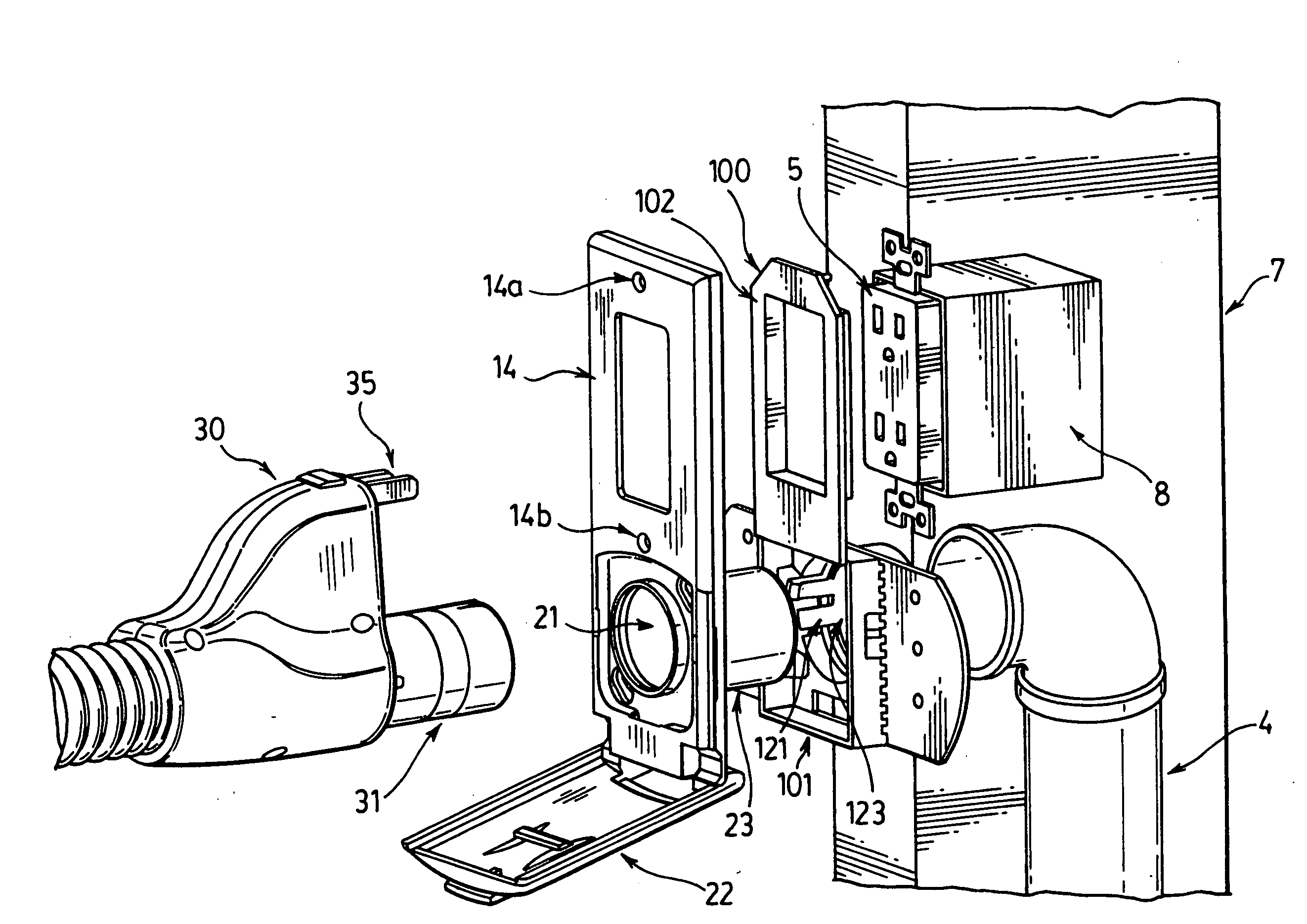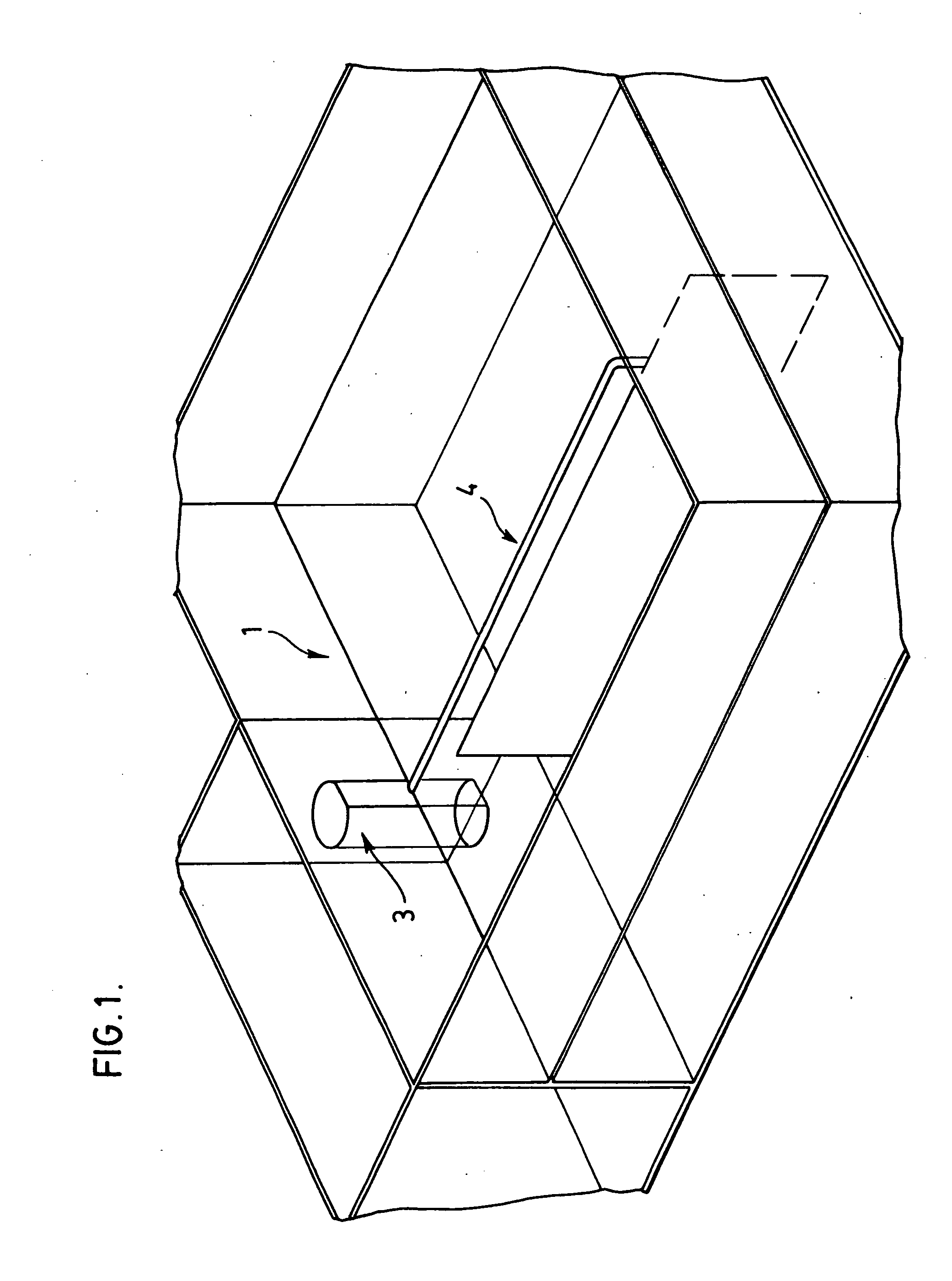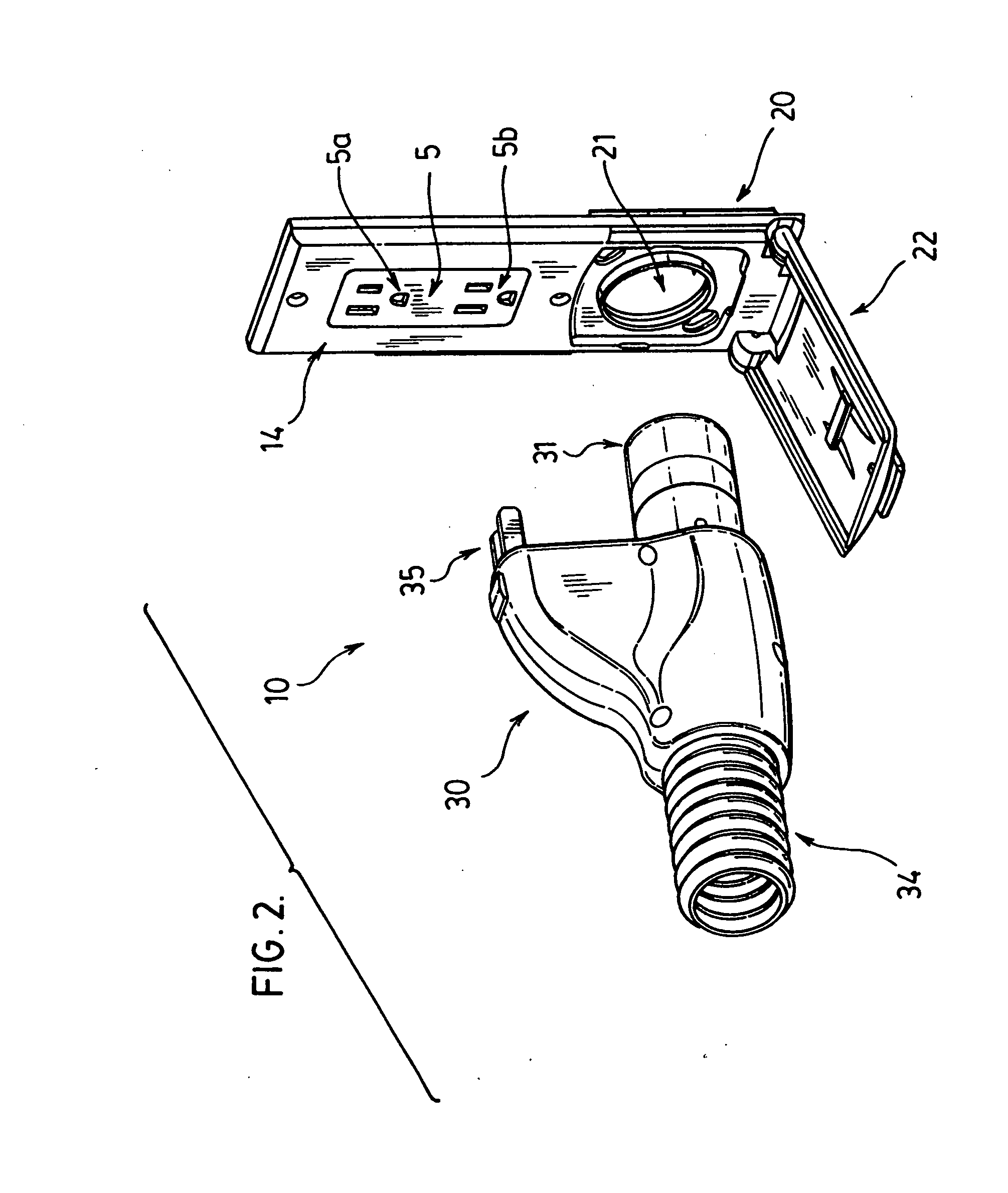[0013]Accordingly, in one preferred embodiment, an
advantage of the present invention is that a direct connect hose cuff having standard electrical terminals can be used to provide a high
voltage connection to an attachment for a current carrying flexible hose. This occurs, at least in part, because the hose cuff has standard electrical terminals which can engage into an electrical plug of an electrical receptacle, providing a more robust
electrical connection.
[0014]In a further embodiment, additional advantages involve more direct installation. This arises, at least in part, by avoiding the need for a separate visit by an electrician. In one preferred embodiment, the vacuum hose connection in the inlet valve is installed at a known orientation with respect to the electrical receptacle. This is done even though the electrical receptacle is not installed generally at the time the vacuum
system is installed by using the fact that all electrical receptacles have a
standard distance with respect to the other components of the electrical box. In a preferred embodiment, a mounting
flange is used to orient the vacuum connection opening with respect to the securing holes which are used during installation of the actual electrical receptacle. In this way, the vacuum hose connection may be oriented in a first known orientation with respect to the anticipated orientation of the
electrical connection when it is eventually inserted into the electrical box. In one preferred embodiment, this provides for the vacuum system to be roughed in without the need for an electrician to make a separate
electrical connection for a high
voltage connection associated with the vacuum system at least in part because the inlet valve would be set in a known orientation with respect to the electrical receptacle, which known orientation corresponds to the orientation of the electrical terminals and vacuum connection of the hose cuff.
[0015]Furthermore, in a preferred embodiment, the orienting portion used on the mounting
flange for orienting the vacuum connection opening with respect to the anticipated orientation of the electrical receptacle is removable. This can be done in one preferred embodiment, for instance, by having a frangible portion which permits the orienting portion to be removed from the main body. In this way, once the main body of the mounting plate having the vacuum connection opening is secured in the appropriate orientation with respect to the anticipated position of the electrical receptacle, the orienting portion can be removed thereby avoiding any interference with the other trades, such as the electrician.
[0016]A further
advantage of at least one embodiment of the present invention is that no additional wall valve
electrical wiring is required. In other words, the inlet valve as installed does not contain any high voltage
electrical wiring. This decreases the costs associated with the inlet valve. This further decreases the cost of installing and maintaining the electrical inlet valve. For instance, long term difficulties regarding wiring can be decreased as all high voltage power emanates from a standard electrical box. Furthermore, because a standard electrical box is used without any interference between the inlet valve and the electrical box, this invention can be easily adapted for use in non-custom built homes.
[0017]In a further preferred embodiment, the hose cuff used to mate with the electrical receptacle and the inlet valve is arranged such that the vacuum connection is located below the electrical receptacle. This is done for a number of reasons. First, the location of the electrical receptacle to the
structural element is variable, either on the left or right side of the stud. Thus, if the electrical receptacle was located on the same plane as the vacuum inlet valve, it would be necessary to have a left hose cuff connection and a right hose cuff connection because of the fact that the
structural element would increase and vary the distance between the electrical receptacle and vacuum inlet valve and would prevent the hose cuff from being interchangeable between the vacuum inlet valve on the left side and a vacuum inlet valve on the right side of the electrical receptacle. Furthermore, by having the electrical terminals above the vacuum inlet valve, it is easier for the
consumer to insert the electrical terminals, which are generally smaller and more difficult to insert, into the electrical receptacle while simultaneously inserting the vacuum connection of the hose cuff into the vacuum connection opening of the inlet valve. This is the case at least because the user will be able to see the electrical terminals, which are on top, contrary to the case if the electrical terminals were below the vacuum connection. Furthermore, the electrical terminals have a space between them and are shorter than the vacuum connection of the hose cuff which permits the user to view the vacuum connection of the hose cuff while at the same time viewing the electrical terminals. Clearly, this would not be the case if the vacuum connection was located above the electrical terminals.
[0018]In a further preferred embodiment, the electrical terminals may be rotatable from a first position where their lengthwise axis is substantially parallel to the center line of the vacuum connection, to a second position where the lengthwise axis is substantially perpendicular to the center axis of the vacuum connection. This could be done, for instance, to provide the same hose cuff to be used with vacuum inlet valves that have not been installed with an electrical receptacle oriented with respect to the vacuum connection opening of the inlet valve.
 Login to View More
Login to View More  Login to View More
Login to View More 


